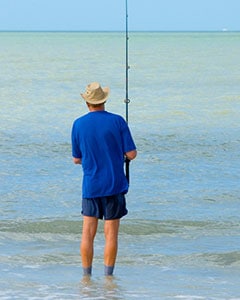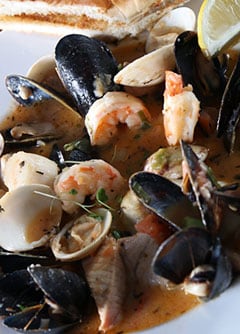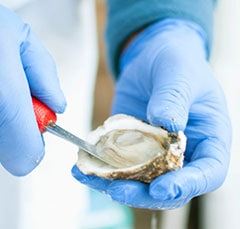Prevention Tips

You can reduce your risk of vibriosis by following these tips:
- Don’t eat raw or undercooked oysters or other shellfish. Cook them before eating.
- Always wash your hands with soap and water after handing raw shellfish.
- Avoid contaminating cooked shellfish with raw shellfish and its juices.
- Stay out of salt water or brackish water if you have a wound (including from a recent surgery, piercing, or tattoo), or cover your wound with a waterproof bandage if there’s a possibility it could come into contact with salt water or brackish water, raw seafood, or raw seafood juices. Brackish water is a mixture of fresh and salt water. It is often found where rivers meet the sea.
- Wash wounds and cuts thoroughly with soap and water if they have been exposed to seawater or raw seafood or its juices.
- If you develop a skin infection, tell your medical provider if your skin has come into contact with salt water or brackish water, raw seafood, or raw seafood juices.
If you are in a group more likely to get vibriosis:
- Wear clothes and shoes that can protect you from cuts and scrapes when in salt water or brackish water.
- Wear protective gloves when handling raw seafood.
Tips for Cooking Shellfish

Before cooking, discard any shellfish with open shells.
For shellfish in the shell, either:
- Boil until the shells open and continue boiling another 3-5 minutes, or
- Add to a steamer when water is already steaming, and cook for another 4-9 minutes.
Only eat shellfish that open during cooking. Throw out any shellfish that do not open fully after cooking.
For shucked oysters, either:
- Boil for at least 3 minutes,
- Fry in oil for at least 3 minutes at 375° Fahrenheit,
- Broil 3 inches from heat for 3 minutes, or
- Bake at 450° Fahrenheit for 10 minutes.
Page last reviewed: May 21, 2019
